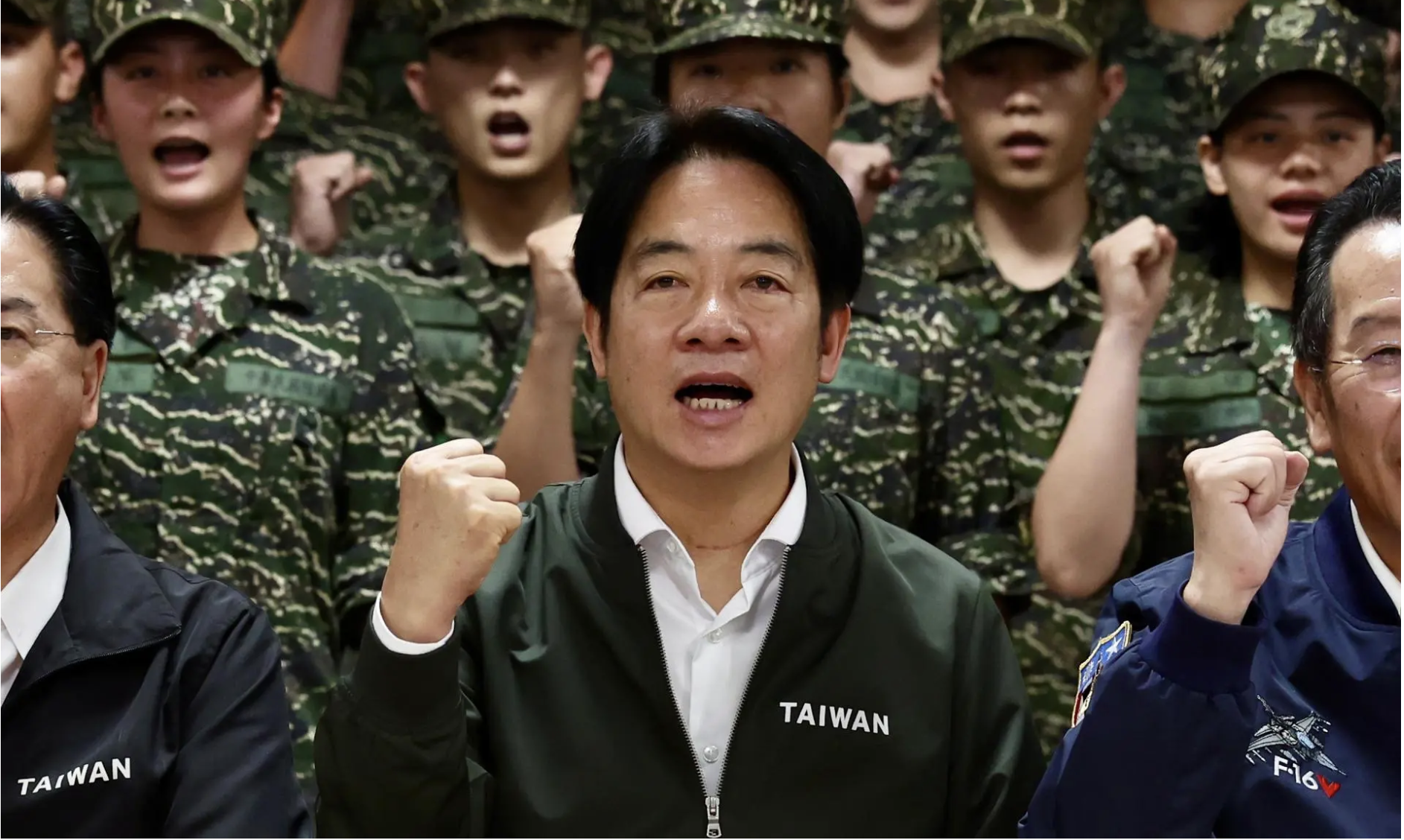
In a historic and Churchillian address, Taiwanese President Lai Ching-te vowed to resist “annexation” and, in another speech, rejected the Chinese Communist Party (CCP) on the mainland and said it was “impossible” for the People’s Republic of China (PRC) to become Taiwan’s “motherland.”
Clarity and resolve can deter and prevent conflict. Ambiguity, especially when not backed up with overwhelming force, incites conflict. There is no fuzziness in the viewpoint of Taiwan’s president.

American defense scholars often observe that Taiwan lacks preparedness. The Honorable Randall G. Schriver, who served as the assistant secretary of defense for Indo-Pacific Security Affairs during the Trump administration, said Taiwan should take measures such as instituting better training programs for its reserves.
Right now, the requirements for reservists are minimal, like maybe firing a weapon a couple of times a year. A stronger reserve component would really help.
Taiwan also needs to spend money on military systems and platforms appropriate for all phases of conflict, including the coercion and gray-zone areas and counter-invasion capabilities. In addition, training, logistics, and maintenance are crucial.
Lai has listened to the feedback and taken action by creating the Whole-of-Society Defense Resilience Committee and mobilizing 400,000 civilians to be ready in the event of military conflict.
Enhancing National Readiness

Lai’s plan is a “soft” mobilization that incorporates lessons learned from Ukraine. The initiative aims to engage civilians willing to assist in resisting foreign occupation or attack. It requires collective efforts from the diplomatic corps, the military, security services, the private sector, civil society, and the broader population.
A key initiative that inspired this plan was the Russian raid on Hostomel Airport, just to the west of Kyiv, during the first few hours of Moscow’s invasion of Ukraine on Feb. 24, 2022.
For a month, Russian paratroopers battled a hastily assembled force of the Ukrainian regular army, national guard, reservists, and civilians. The tenacious Ukrainian resistance forced the surviving Russian forces to retreat by late March—a whole-of-society organization. This stand inspired the Taiwan plan.
I met with officials from various ministries and think tanks during my trip to Taiwan from Sept. 6 to Sept. 14. Senior research fellows at the Institute for National Defense and Security Research, including Su Tzu-yun, Kung Shan-son, and Charles C.J. Wang, said that Taiwan is capable of defending itself in the short term: They said Taiwan wants to be able to stand on its own and defend itself without American help.
They made it clear that they did not want it to look like Taiwan expected or needed American forces to defend the island. They said all Taiwan asks is that the arms and ammunition from its arms purchases be delivered.
Heightened Readiness at Sea, Airports

Adding urgency to the matter, the Chinese recently launched a ballistic missile from Hainan Island into the South Pacific, 2,000 miles south of Hawaii.
This launch was essentially unprecedented—the last time the Chinese regime did this was 44 years ago, in 1980.
The launch was likely a message regarding a historic joint statement of support for Taiwan issued in September by the United States and the European Union.
The document left out the “One China” statement, which has become stale and out of step with the modern era.
In addition to the long-range ballistic missile launch into the South Pacific, the Taiwanese Pave Paws radar detected several waves of additional missile launches within China after Beijing’s Sept. 25 intercontinental ballistic missile launch.
In light of all of these missile launches, the Taiwanese have declared an alert and put their seaports and airports on higher levels of readiness in preparation for possible missile strikes by the Chinese regime.
The Taiwanese sea and airports are critical to maintaining the flow of food, energy, and citizens. The Taiwanese Resilience Support program being established will be able to rapidly clear debris, ensure critical systems are placed back into operation, and provide medical care for those wounded if the Chinese conduct missile strikes on these facilities.
Arrival of 1st Harpoon Missiles

It was publicly announced that the first delivery of 400 American-made Harpoon long-range anti-ship missiles and their launch units arrived in the port of Kaohsiung, Taiwan, on Sept. 27. These missiles provide a powerful deterrent.
They complement the large inventory of Hsuing Feng land attack and anti-ship missiles the Taiwanese already have in bunkered launch sites in the high ground of mountainous Taiwan. The Taiwanese also have mobile launch units and air-launched variants.
The Taiwanese have developed their own version of the Tomahawk missile, called the Hsuing Feng II. This missile can reach deep into China and target and threaten Chinese airfields and naval bases. The American Harpoon missiles will be based at two to three new missile bases.
The Taiwanese defense researchers I spoke to mentioned a concern about a possible Chinese “quarantine” of Taiwan within six months.
The Harpoon missile shipment is exactly what any Chinese military or security quarantine would attempt to block or seize. The national resilience force that Lai described would add depth and capability for the island nation to withstand such coercion.

A strengthened Taiwanese military reserve element would also allow greater staffing of defensive missiles and other units for greater readiness. Together, these elements could successfully replicate a defense similar to that Ukraine organized against the Russian invasion.
Views expressed in this article are opinions of the author and do not necessarily reflect the views of The Epoch Times.
All viewpoints are personal and do not reflect the viewpoints of any organization.
This article first appeared in Epoch Times and was reprinted with permission.















